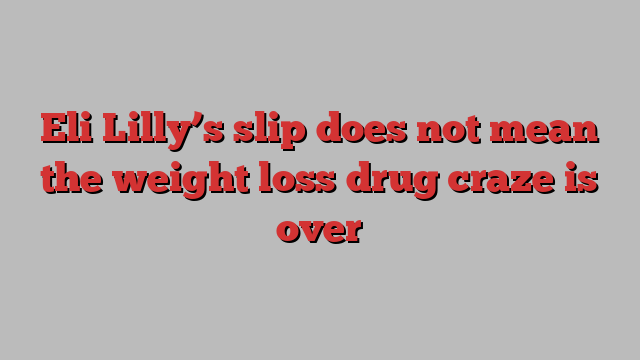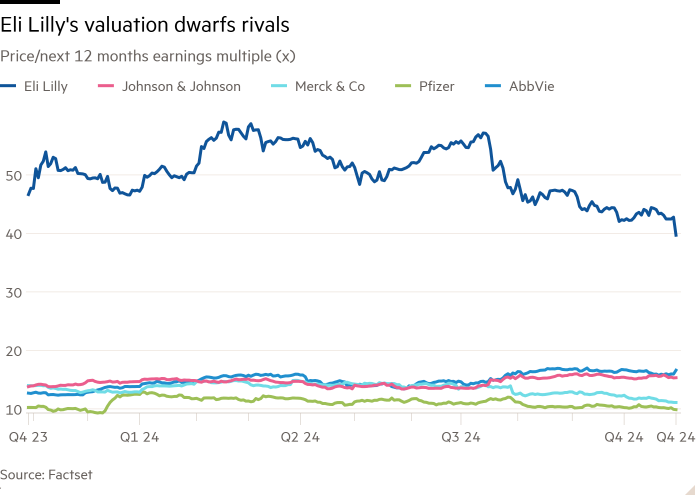
Unlock the Editor’s Digest for free
Roula Khalaf, Editor of the FT, selects her favourite stories in this weekly newsletter.
Eli Lilly’s chunky valuation means it has little room for error. The shares have more than tripled since the start of 2022 to make the company the world’s most valuable drugmaker. Thanks to the frenzy for its weight-loss drugs, it had at its peak last month a market capitalisation of over $860bn. Its price to forward earnings multiple of over 50 times also puts it on a hefty premium to other pharma groups. Pfizer trades on just 11 times.
With expectations so high, it would not take much bad news for Eli Lilly’s blistering run to go into reverse.
That appears to be what happened on Wednesday. The stock tumbled by as much as 11 per cent in pre-market trading after Eli Lilly reported quarterly sales for its key GLP-1 drugs — Mounjaro and Zepbound — that missed analysts’ estimates. After raising its guidance twice this year, Eli Lilly now expects full year sales to top out at $46bn, compared with its previous guidance of $46.6bn.

Shares recovered slightly to trade 9 per cent lower. Even so, the selling looks overdone. The latest results are not a wash out. Sales of Mounjaro, a diabetes treatment that some doctors prescribe off-label as a weight loss drug, came in at $3.11bn during the quarter. While that missed analyst expectations for $3.6bn, it is still more than double the $1.4bn the drug pulled in during the year ago period. Zepbound, a weight-loss injection that was only approved last year, generated $1.26bn in sales, below the $1.69bn predicted.
The misses are largely down to inventory issues, rather than weaker demand. Until recently, Eli Lilly had struggled to produce enough Mounjaro and Zepbound to meet demand. A ramp-up in manufacturing capacity finally allowed it to fill back-orders and improve wholesaler supplies during the second quarter. During the third quarter, wholesalers chose to sell down existing inventory rather than buy more.
There is a good reason for this. Both Mounjaro and Zepbound are available in six different dosages. Efficient management of inventories means wholesalers are waiting to see which of the dosages are more popular before restocking. A better gauge of demand would be the number of prescriptions for the drugs. These rose 25 per cent quarter on quarter.
With more than 40 per cent of US adults considered obese, demand for weight loss drugs will stay robust. One estimate reckons the market for GLP-1 drugs could be worth as much as $150bn by 2031. The long-term outlook for Eli Lilly’s obesity business remains intact — especially if the drugs end up providing other health benefits.